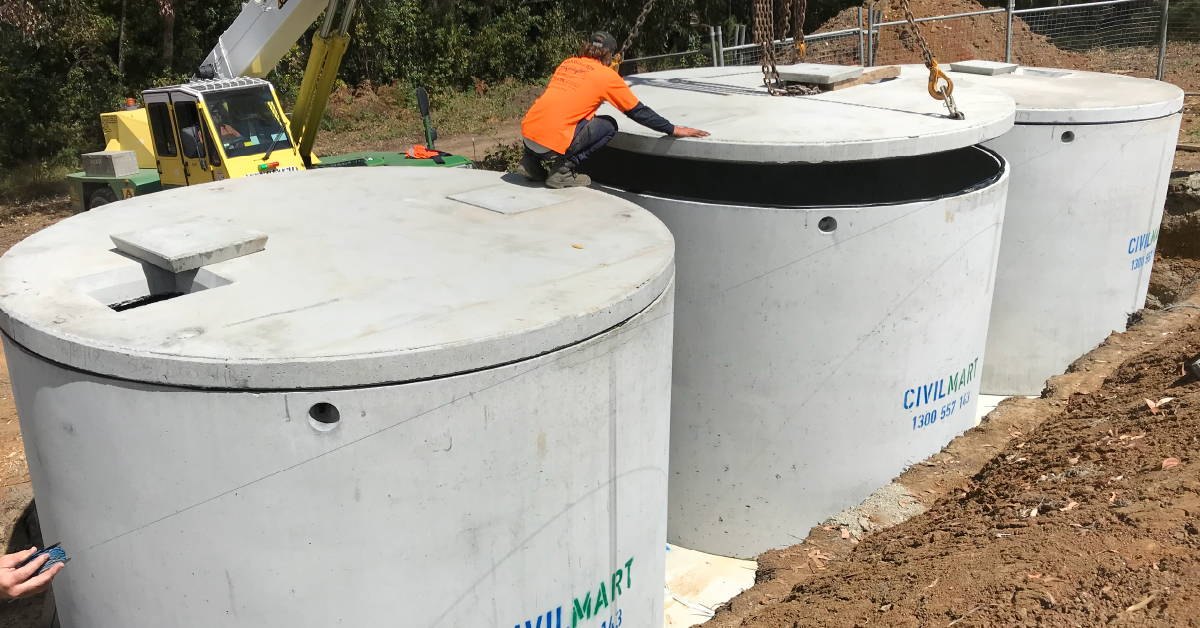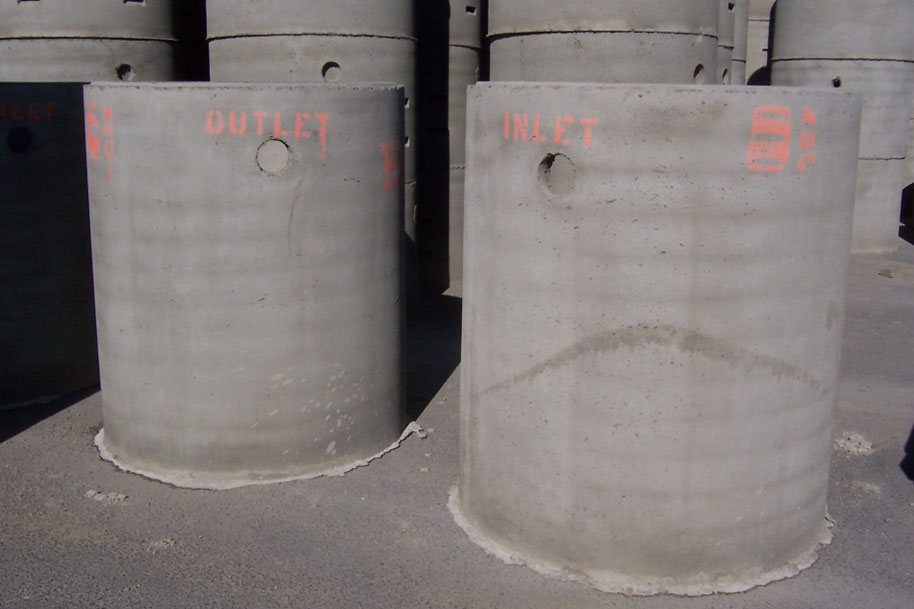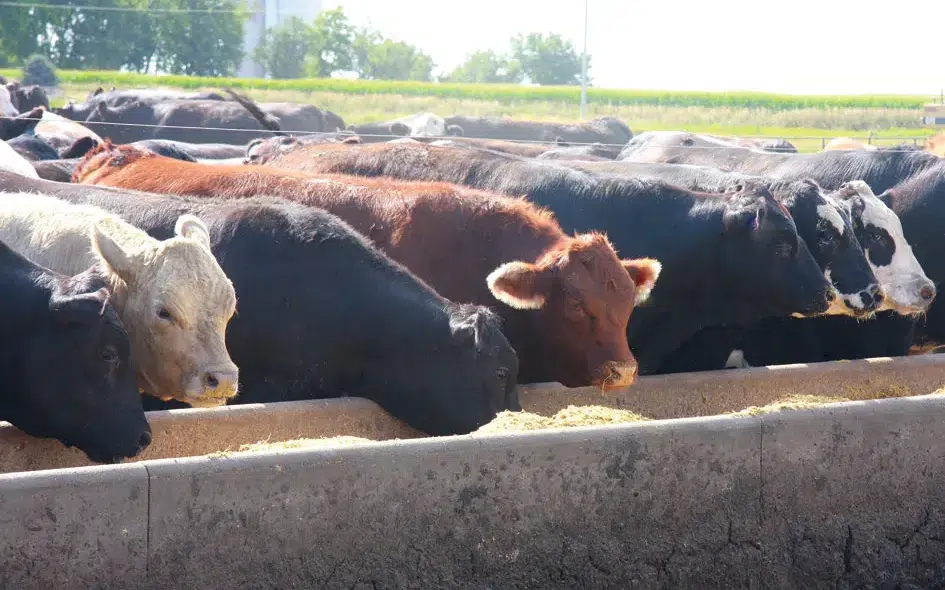From sludge, scum, and smelly to sparkling, sanitised, scent-free, squeaky-clean… In this post, we dive into the murky depths of wastewater treatment to answer your questions about wastewater treatment systems. In particular, we look at the aerated wastewater treatment system (AWTS), and consider how this system stacks up against other wastewater treatment systems. We explain the main processes involved in aeration wastewater treatment, and even give you a step-by-step guide to how an AWTS works.
What is an aerated wastewater treatment system?
An Aerated Wastewater Treatment System, like the UltraClear series, is a self-contained biological wastewater treatment system designed for use in small settings – residential, community, commercial, light industrial etc. They treat wastewater from bathrooms, toilets, laundries, and kitchens, much like a standard septic system does.
However, an AWTS incorporates an additional aeration process, between the settling and sanitising/discharge stages, to remove dissolved organic matter in the effluent. This process uses highly efficient aerobic bacteria, which require oxygen, so air is pumped through the effluent in a specially designed aeration chamber. The result is a high-quality, very clean effluent that can be safely used in a range of non-potable applications, or discharged directly into the environment.
What is Wastewater Treatment?
Wastewater treatment per se is the process of removing contaminants – solids, litter, oils and fats, chemicals, microorganisms, parasites etc – from wastewater to make it safe for reuse or discharge into the environment. The wastewater can come from various sources – a lot of what we call wastewater is raw sewerage but it can also be stormwater runoff and water from industrial and commercial processes, although the latter types of wastewater are typically treated differently to sewerage.
Why is effective wastewater treatment important?
For centuries, human civilisations have been treating the environment, and particularly natural drainage systems like rivers and creeks, as a dumping ground for our contaminated wastewater. From raw sewerage to highly toxic industrial and mine water discharges – we’ve let it seep, leak, and flow freely into the environment. As a result, we’ve had to endure widespread health problems, such as devastating outbreaks of waterborne diseases like cholera and typhoid, and contaminated entire ecosystems with disastrous consequences for the organisms that live in them, including us.
Fortunately, if rather belatedly, we’ve come to realise that treating our wastewater effectively is central to our health and the survival of the environment, and to the health and survival of the other species we share this planet with. Left untreated, wastewater contaminates ground water, natural water systems, and soil. It spreads disease, destroys aquatic environments, and generally creates a huge stink!
Conversely – when treated correctly via an effective wastewater treatment system, wastewater is a valuable resource. It can be used to replenish natural ground water sources, for non-potable uses such as irrigation and industrial processes, and to reduce pressure on precious potable water resources.
Types Of Wastewater Treatment Systems
There are various types of wastewater treatment systems depending on the type of wastewater to be treated. Stormwater runoff for example is treated differently to sewage wastewater. Some systems are very effective; others not so much. The most effective, and the most commonly used, methods of treating wastewater are:
- Physical Water Treatment
- Biological Water treatment
- Chemical Treatment
- Sludge Treatment
Physical Water Treatment Systems
As the name indicates, physical water treatment involves physically removing solids and particulate matter from the water. Physical wastewater treatment systems, like a gross pollutant trap, are most commonly used to treat stormwater run off. They are placed in stormwater catchment systems to physically trap solids in the water – storm debris, litter, and even fine particulate matter – using processes such as continuous deflection separation technology, filtering, screening, and sedimentation.
Water from physical water treatment systems can usually be safely released back into the environment or used in industrial processes unless it also contains dissolved or micro-contaminants, in which case further treatment is required. It is not however potable, or at least not without a lot more processing to ensure it is totally clean and sterile.
Biological Water Treatment Systems
A biological wastewater treatment system uses microorganisms to break down organic matter in the water. Biological water treatment systems are either aerobic (aerated), or anaerobic.
An aerobic or aerated wastewater treatment system like the UltraClear Model ST8 and Model ST10 uses aerobic bacteria (require oxygen) to decompose the organic matter in wastewater, including dissolved solids. They are commonly used in smaller decentralised wastewater treatment systems – homes, small commercial establishments, small residential communities etc – to treat sewerage, grey water, and small volumes of industrial and commercial wastewater with a high content of organic matter.
An anaerobic wastewater treatment system uses anaerobic bacteria (don’t require oxygen) to do the same thing – break down organic matter in the wastewater. A regular septic system for example contains anaerobic bacteria to break down the solids in the effluent.
Anaerobic bacteria also produce methane as a by-product so are often used in big centralised wastewater treatment systems to treat large volumes of wastewater for biogas production. They’re also used for sludge digestion with other treatment systems, and for systems that handle warm wastewater
Wastewater Chemical Treatment
Chemical wastewater treatment uses polymers and chemicals like chlorine, lime, ferric (iron) chloride, alum, and ozone along with UV irradiation to:
- Disinfect,
- Add or remove nutrients (phosphates / nitrates / oxygen),
- Remove heavy metals,
- Adjust pH levels (neutralise),
- Coagulate and flocculate solids
in wastewater during various stages of treatment. For instance, most wastewater must be disinfected prior to discharge from the treatment process. Or – wastewater may need to be neutralised prior to treatment to create favourable conditions within the treatment system, and protect equipment from corrosion.
Wastewater Sludge Treatment
Sludge refers to the solids in wastewater that have been separated out by various methods – gravity, centrifugation, filter press – to produce a slush that then undergoes ‘sludge treatment’.
Treating sludge aims to:
- Reduce its volume: concentrating the solids in the sludge, either by reducing (thickening) or removing (dewatering) the water, makes it easier to handle.
- Stabilise it: breaking down organic matter in the sludge reduces its smell and harmful gas emissions and makes it safer to handle.
- Disinfect it: sludge contains pathogens that must be removed before it can be released into the environment.
- Recover resources: compounds in sludge, like nitrogen and phosphorous, can be recycled into fertilisers, whilst organic material can be converted to biogas or used to generate heat. Correctly treated, sludge can also be mixed with other organic materials and turned into compost.
How Does An Aerated Wastewater Treatment System Work?
An aerated wastewater treatment system moves wastewater (effluent) through a series of sedimentation, aeration, settling, and disinfection chambers, which may also be referred to as the Septic, Aeration, Clarification, and Chlorination zones. As the influent/effluent passes through each chamber, or zone, solid and dissolved organic material and other contaminants are progressively removed by each of the various processes, and the water disinfected. By the time it is discharged, the water is clean enough to safely use for garden reticulation, or various other non-potable end-uses.
Step By Step Guide To The UltraClear Aerated Wastewater Treatment System
- A preliminary screening process removes large pieces of debris – plastics, fabrics, sticks, leaves, and other objects in the wastewater from your bathroom, toilet, laundry, and kitchen – that could jam or damage the equipment (people flush all sorts of things down the toilet!).
- The screened influent enters the first of 2 primary sedimentation (septic) tanks where the heavier organic solids drop to the bottom to form the primary sludge and are broken down by anaerobic bacteria. Lighter matter (grease and oils) floats to the surface to create a layer of scum, which helps contain odours and keep oxygen out.
- As more water enters the tank, it pushes the semi-treated ‘primary’ effluent into a 2nd sedimentation tank so any remaining organic solids can settle out.
- The now mostly solid free effluent passes through a transfer port into the first of 2 aeration chambers and flows through media modules permeated with aerobic bacteria. Oxygen is then pumped through the water to sustain the microbes so they can multiply and digest the dissolved organic material in the water.
- This process is repeated in the second aeration chamber for additional purification.
- After aeration, the water moves into the settling chamber. Any remaining sediment i.e. suspended particulate matter, settles to the bottom of the chamber and is pumped back to the first Primary Chamber where it helps sustain the bacterial population within that chamber (in some AWTS, it is pumped back to the aeration chamber).
- Finally, the effluent passes through a chlorination device (some systems have a UV disinfection unit instead) fitted at the inlet between the settling and disinfection chambers. The chlorine (or UV) kills off any remaining pathogens in the water.
- The last chamber in an aerated wastewater treatment system – the pump chamber – is fitted with a float switch and small submersible pump. When the water in the chamber is high enough, the switch turns the pump on and it pumps the now clean and disinfected wastewater out of the unit. In UltraClear systems, the water is used for garden and lawn irrigation but other aeration systems can have different end uses for the water.
- The liquid sludge in the primary sedimentation tanks is pumped out on a regular basis and removed to wastewater sludge treatment plants.
Advantages Of Aerated Systems For Wastewater Treatment
When compared to other treatment systems, aerated systems for wastewater treatment offer significant advantages. They are highly efficient both in terms of processing and water quality and produce a high quality effluent that is suitable for non-potable recycling applications or even discharge into the environment. The following table summarises how an AWTS compares with other treatment systems across a range of metrics.
| System | Overall Efficiency | Effluent Quality | Organic Matter Removal | BOD Reduction | Odour Control | Nutrient recovery | Environmental Impact | Land area Requirement | Maintenance | Weather Susceptibility | Lifespan | Design |
| AWTS | Excellent | Very high | Excellent | Excellent | Effective | Potential | Low | Low – suits areas with rocky soils or high water table | Quarterly | Low | Long | Complex |
| MBR (Membrane Bioreactor) | Excellent | Very high | Excellent | Excellent | Effective | Potential | Moderate | Moderate | Monthly / quarterly | Low | Moderate to Long | Complex |
| Septic Tanks: | Average | Average | Moderate | Average | Variable | Limited | High | Low | As required | Low | Moderate | Simple |
| Lagoons | Good | Variable | Good | Good | Variable | Limited | High | High) | Quarterly / bi-annual | Moderate | Variable | Complex |
| Activated Sludge | Variable | High | Good | Good | Variable | Potential | Moderate | Moderate | Daily | Moderate | Moderate | Complex |
| Sand Filters | Poor | Poor | Poor | Poor | Effective | Limited | Moderate | Moderate | Regular / as required | Low | Moderate | Simple |
| Constructed Wetlands | Moderate to High | Generally good | Moderate | Average | Effective | Moderate | Low to Moderate | Moderate | Seasonal | Moderate | Long | Natural |
| Trickling Filters | Average | Average | Moderate | Average | Effective | Limited | Moderate | Moderate | Annually / bi-annual | Moderate | Moderate | Simple |
How aerated systems differ from other treatment methods
Aerated wastewater treatment systems offer efficiency, sustainability, flexibility, speed, safety, superior performance, and affordability.
- Efficient: Aerated systems are amongst the most efficient wastewater treatment methods. They are able to remove a wider range of contaminants in wastewater, including dissolved organic matter, than other types of systems.
- Sustainable and environmentally friendly: Aerated wastewater treatment systems make use of natural biological processes with minimal use of chemicals.
- Flexible and compact: Small systems like the UltraClear units are compact and can be installed in small tight spaces, making them ideal for residential and small commercial installations. They also suit areas with a high water table, or rocky soil.
- Fast: Aerobic systems typically process wastewater faster than systems that rely on anaerobic bacteria because aerobic microbes work faster, and more efficiently.
- Safe: Where some types of wastewater treatment systems use a range of chemicals across various phases to remove contaminants and disinfect the water, aerobic systems only use chlorine or, increasingly, UV (i.e. the clarified water is run through either a chlorine dispenser or UV unit prior to entering the pumping chamber for removal from the system). This makes them a far safer wastewater treatment option than systems that rely on chemicals to treat the water.
- Superior performance: Aerobic wastewater treatment systems produce a very high quality effluent that can be safely used in a range of non-potable applications i.e. reticulation, landscaping and water art, flushing toilets, dust suppression, and industrial processes.
- Affordable: Although they often come with a higher upfront cost than some simpler systems, small aeration systems such as the UltraClear range are an affordable, ergonomic, effective LONG TERM solution for most residential and small-scale wastewater treatment situations. However, an aerated wastewater treatment system cost will depend on the size of the unit required, and on the location and specifics of the installation site.
- Maintenance: Aerated water treatment system servicing and maintenance requirements are more involved and must be done more often than some simpler (and less efficient) types of treatment systems i.e. septic tanks. However, they are on a par with, or require far less, than similarly efficient systems.
Aerated Wastewater Treatment Stages
Although the specifics may vary between different brands and models, all aerated wastewater treatment systems have 3 main processing stages:
- The preliminary treatment stage
- The primary treatment stage; and
- The secondary treatment stage
Aerated Wastewater Preliminary Treatment Stage
During the preliminary treatment stage, the influent passes through a special bar screen to remove large pieces of non-biodegradable rubbish and debris that could damage components in the unit. Once clear of these contaminants, the influent can safely move into the primary treatment chamber.
Aerated Wastewater Primary Treatment Stage
The primary treatment stage is where most of the heavy ‘lifting and settling’ is done in an AWTS. A primary sedimentation (septic) tank or chamber allows the influent to settle into 3 layers – a surface layer of oils and greases (scum), a middle layer of water (primary effluent), and a bottom layer of heavy organic solids (sludge).
Like regular septic tanks, the sedimentation tank uses anaerobic microbes to break down the organic solids in the sludge.
As more water enters the tank, it pushes the (now) primary effluent into the next stage of the AWTS treatment process – the aeration or secondary treatment stage. Exit is via an outlet placed within the effluent layer to reduce the risk of scum and primary sludge entering the aeration tank.
Aerated Wastewater Secondary Treatment Stage
The secondary treatment stage is the ‘aerated’ part of the process.
When it enters the aeration tank, or chamber, the effluent is mostly clear of visible solids but still contains dissolved materials and some fine particulate matter. Removing the dissolved material, and even some of the particulate matter, is the job of the aerobic microbes in this tank. However, as aerobic microbes require oxygen, and the water has come from the anaerobic environment of the settling tank, the oxygen must be added.
This is done via a pump that pushes air through the water to aerate it. The aerobic bacteria can then go to work breaking down the remaining organic matter into (more) water, nitrates, carbon dioxide etc.
After aeration, the now ‘secondary’ effluent passes into a settling or clarification chamber where any remaining suspended particles are allowed to settle out. Then it’s on to the pump chamber (through a chlorination dispenser or UV unit) for dispersal via an irrigation system, or to be reused in other non-potable applications.
Applications of Aerated Wastewater Treatment Systems
Aerated wastewater treatment systems have a range of applications. They are particularly suited for standalone use in areas where municipal sewerage isn’t available but can also be used in small municipal and industrial wastewater treatment systems.
Municipal wastewater treatment: in small communities and remote areas, municipal wastewater treatment systems can incorporate AWTS either as part of the broader wastewater treatment system, or as decentralised systems to process local effluent for non-potable recycling applications, or discharge back into the environment.
They can also be installed at recreational and remote facilities – camping grounds, parks, sports facilities, military bases, research stations, mining camps and so on – where it isn’t practical or feasible to connect to mains sewers.
Industrial wastewater treatment: industries that produce suitable effluent (organic-rich as opposed to chemical/inorganic/heavy metal-rich) can use AWTS to either pretreat their wastewater before it enters the municipal sewer system or for reuse within their premises.
Why Choose Civilmart for Your Wastewater Treatment System?
Civilmart is a leading manufacturer and supplier of concrete products and water treatment systems for a range of applications, including wastewater. We also partner with reputable suppliers of high-quality wastewater treatment systems, like UltraClear. With our experienced team, exceptional customer service standards, and long history in the concrete manufacturing industry, we are the obvious choice of partner for all your wastewater treatment system needs. Contact our team today to discuss your wastewater treatment system.




